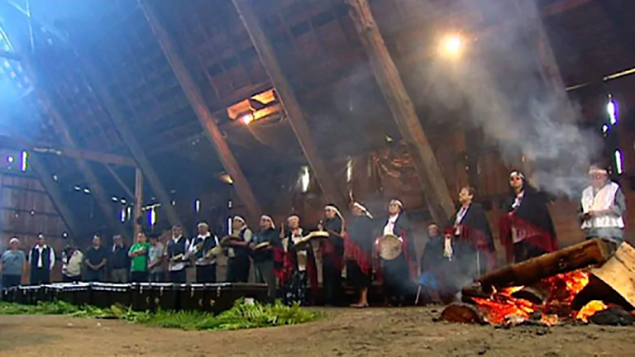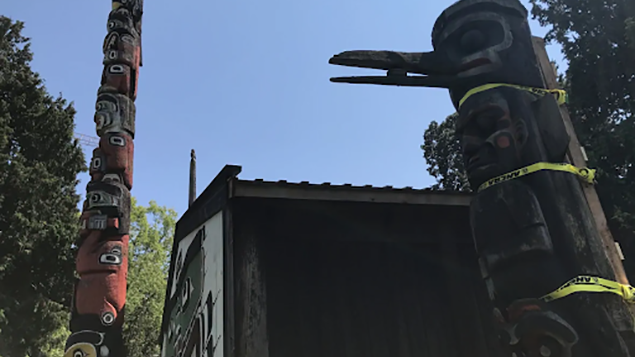British Columbia’s provincial government is increasing its funding to help Indigenous communities repatriate ancestral remains and cultural objects from around the world.
The government has announced it is contributing $500,000 to the B.C. Museums Association to provide a range of grants to support some 203 First Nations and 23 cultural centres at various stages of the process.
The money is in addition to $2 million the government had previously provided over three years to the Royal B.C. Museum in Victoria for repatriation activities.
“There was sort of a colonial treasure hunt that began when Europeans arrived here,” Jodi Simkin, president of the B.C. Museums Association, told Amy Smart of The Canadian Press.

A 2008 ceremony at the American Museum of Natural History in New York City for members of the Tseycum First Nation who took home the remains of 50 ancestors held by the museum. The bones were removed from burial grounds on southern Vancouver Island’s Saanich Peninsula by archeologists in the early 20th century. (CBC)
“Policy was designed to eradicate and amalgamate First Nations Peoples into the larger community and there was a sense that if anthropologists and archeologists didn’t preserve those pieces and those ancestors for later study that the community would just disappear because they would have been accumulated or assimilated,” said Smith, who is also director of cultural affairs and heritage for the Klahoose First Nation on Cortes Island, located off the east coast of Vancouver Island.
Simkin, who is also part of a repatriation working group with the Association on American Indian Affairs, says the collections aren’t limited to Canada or to museums.
The organization estimates between one million and two million ancestral and related cultural patrimony are sitting in museum collections around the world.
“Why that number is significant is that it does not include what’s being held in private collections, so that number could be exponentially higher,” Simkin told Smart.
Funding supports repatriation planning, building capacity to take on such projects and encourages collaboration with cultural organizations.
“This funding allows museums, archives, and Indigenous peoples new opportunities to work together towards decolonization and realizing the goals set out by the Truth and Reconciliation Commission and the United Nations Declaration on the Rights of Indigenous Peoples,” Dan Smith, chair of the B.C.Museum Association’s Indigenous Advisory Committee and a member of the Wei Wai Kum First Nation in Campbell River, said in a statement.
“True, meaningful, and lasting reconciliation must include the return of Indigenous culture back to Indigenous communities.”
(The Royal B.C. Museum changed its policies last year to no longer collect or study ancestral remains and announced that anything it acquired from Indigenous Peoples during the anti-potlatch years, from 1885 to 1951, will be considered eligible for repatriation because it was obtained at a time of duress.)
With files from The Canadian Press (Amy Smart), CBC News







For reasons beyond our control, and for an undetermined period of time, our comment section is now closed. However, our social networks remain open to your contributions.